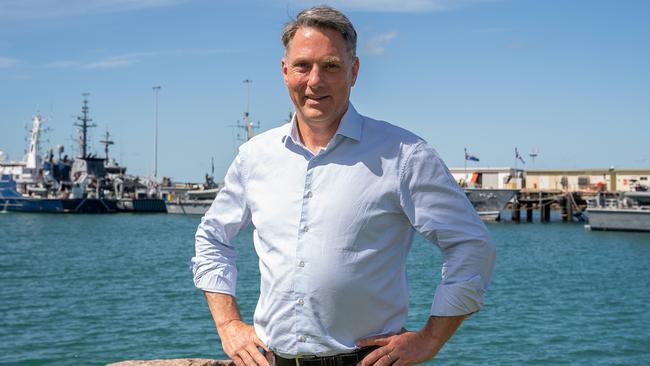$3bn ‘accelerator’ puts war hi-tech on fast track
A $3.4bn Defence innovation ‘accelerator’ will get hypersonic missiles, directed energy weapons and autonomous vehicles into service sooner.

A $3.4bn Defence innovation “accelerator” will be charged with getting cutting-edge military technologies into service sooner, including hypersonic missiles, directed energy weapons and autonomous vehicles.
The commitment, to be announced on Friday, will also focus on developing long-range missile platforms, quantum computing and information warfare.
The Advanced Strategic Capabilities Accelerator will be funded for the next decade to fast-track new war-fighting technologies for the Australian Defence Force.
The government wants the accelerator to develop game-changing technologies “that will give the ADF an asymmetric advantage” over potential adversaries amid the most challenging strategic circumstances in generations.
The commitment boosts funding by $591m above planned defence innovation spending, with the money to be drawn from the current Defence budget and a promised funding boost beyond the next four years.
The accelerator plan, pledged at the last election but previously unfunded, was pitched as Australia’s answer to the US Defence Advanced Research Projects Agency, or DARPA, which invented the internet, GPS, the computer mouse and stealth aircraft technology.
The Defence Strategic Review, led by former defence minister Stephen Smith and former defence chief Angus Houston, said the new capabilities accelerator was needed to “rapidly translate disruptive new technologies into ADF capability, in close partnership with Australian industry”. It said the body “must be an unencumbered entity outside of Defence”.

Defence Industry Minister Pat Conroy said the body would initially be established within the department “to get it up and running as fast as possible”.
“We’ve positioned it initially in Defence, but we’ve left open the possibility that it can be moved out if it’s not working the way we want it to work, and Defence understands that,” Mr Conroy said.
The announcement comes as the government moves to acquire a major stake in one of the nation’s most innovative defence firms, CEA Technologies, which has developed world-leading radar systems.
Taxpayers will buy shares in the company owned by US defence giant Northrop Grumman, holding a non-controlling stake in the company for the next 18 months. The company will then come under commonwealth control as a government business unit.
Mr Conroy said the move was aimed at maintaining sovereign control of the company, which employs 600 Australians.
The innovation accelerator will be run by three senior Defence leaders – the Vice-Chief of the Defence Force David Johnston, Defence Science and Technology Group head Tanya Monro, and Capability Acquisition and Sustainment Group chief Chris Deeble.
It will have a phased start-up over 18 months to develop and test its operating model.
The body will replace all of Defence’s innovation programs, supplying “ideas, technologies and innovation skills” to ensure the ADF meets current and future strategic challenges.
Mr Conroy said the innovation group would work closely with the technologies’ end users to respond to their capability needs.
“The warfighter will say, ‘These are the problems, these are the challenges. We want you to develop technologies that will give us an asymmetric edge in the next five years.’
“We will go out to the defence industry and say ‘Who's got the technologies, or a view about how we can solve that?’,” he said.
“We will then fund them to prove-up the technology.”
Unlike previous innovation programs that supported capabilities not ultimately procured for the ADF, Mr Conroy said he would “nail the capability manager’s feet to the floor” to ensure new technologies were brought into service once approved.
The move comes as Defence works to get autonomous systems like the Ghost Bat aerial drone and the Ghost Shark unmanned submarine into service as soon as possible.
“There is a broader conversation in the (defence strategic review) which the government accepts about the importance of uncrewed autonomous systems, and not just aerial systems but land and sea as well, as being part of the future of combat,” Defence Minister Richard Marles said.
“We absolutely see that Australia needs to be a part of the innovation associated with that, which is why translating innovation into operation is one of the six key priorities we announced on Monday in our response to the DSR.”
Mr Marles and Mr Conroy have been progressively making funding announcements following Monday’s release of the defence strategic review, including $3.8bn on Thursday to upgrade the nation’s Top End bases over the next four years.




To join the conversation, please log in. Don't have an account? Register
Join the conversation, you are commenting as Logout